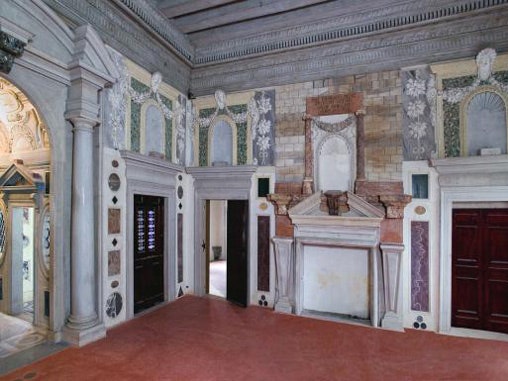Venice is a trap. The city is so stunningly beautiful, that it’d be easy to spend an entire visit wandering the side streets of Canareggio or Dorsduro, or drawn into the Accademia and the Guggenheim Collection. While these sites are certainly worth exploring, if you're not wary, they'll distract you from discovering the city's other treasures, much less well-known and, as a result, much quieter. Here are five of Context Travel experts' favorite off-the-beaten-path museums in Venice.
Fondazione Querini Stampalia One of the best painting collections in Venice is situated in a noble family’s well-preserved palazzo. In addition to more than 400 works by artists such as Bellini and Tiepolo, the rooms are lavishly decorated with stuccoes, frescoes, and original 17th-century furnishings.
**Palazzo Grimani **This interesting collection is housed in a rare example of a 16th-century Venetian private palazzo. You'll see frescoes by Giovanni da Udine, the last remnant of Giorgone’s fresco from the Fondaco dei Tedeschi, and a triptych by Bosch. (As art historian Susan Steer points out, you'd otherwise have to go to Madrid to see Bosch). The museum also hosts rotating exhibitions; through July 1, there's a show dedicated to Canaletto’s sketches of Venice.
Museo Fortuny The 15th-century Palazzo Fortuny was lovingly restored to its former glory in the early 20th century by Spanish artist and fashion designer Mariano Fortuny Madrazo, who left it to the city of Venice. Its collection of textiles, lighting, sculpture, and paintings represent Fortuny's eclectic tastes.
Scuola di San Giorgio degli Schiavoni Founded in 1451 as the confraternity of the Dalmations who lived in Venice, this building was decorated in the early 16th century by painter Vittore Carpaccio. Carpaccio's series dedicated to the Dalmation saints and to episodes of Christ’s life are considered some of his best work and are well worth a visit. Our favorite? Saint George and the Dragon.
Casa di Carlo Goldoni Playwright Carlo Goldoni was born in this Venetian Gothic casa in 1707. Nearly 200 years later, a scholar purchased the building with the intention of turning it into a museum dedicated to Goldoni, but thanks to two world wars, that project was delayed until 1953. Today, the collection contains manuscripts, paintings, and objects relating to Goldoni. What's more, a visit here gives you the chance to step away from the pomp and decoration of the standard Venetian structures that are open to the public and lets you experience a more modest home.
Photo Courtesy Palazzo Grimani
